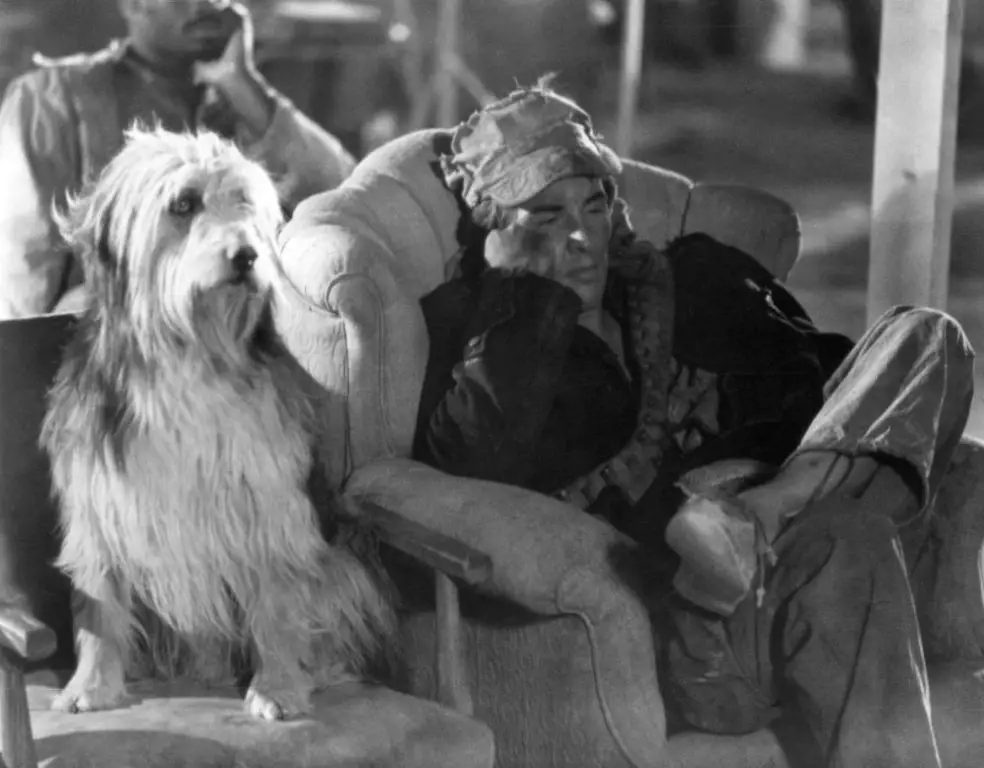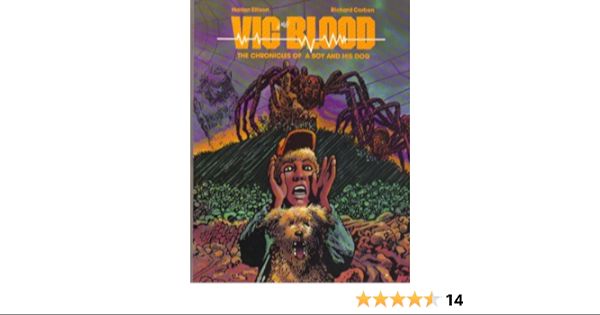Introduction
Old Yeller is a 1957 American drama film produced by Walt Disney. It stars Tommy Kirk, Dorothy McGuire, Fess Parker, and Kevin Corcoran. The film is about a teenage boy named Travis Coates living in Texas after the American Civil War. When his father leaves home for a cattle drive, Travis is left to take care of his family and their farm. While doing his chores, Travis asks a stray yellow mongrel dog named “Old Yeller” to help him out. Though Travis initially dislikes Old Yeller, the two eventually become close friends.
Old Yeller is set in the late 1860s in Texas, shortly after the end of the American Civil War. The Coates family lives in isolation in the Texas hill country. The ranch is far from any towns or other settlements. 14-year-old Travis Coates lives on the ranch with his mother Katie, younger brother Arliss, and older sister Lisbeth. Travis’ father Jim is away on a cattle drive.
After doing his morning chores, Travis and Old Yeller explore the farm and surrounding wilderness together. Travis teaches Old Yeller tricks and commands. The two become inseparable companions as Old Yeller helps Travis with farm work. Later, Lisbeth’s boyfriend Bud Searcy visits the ranch. He warns the family about hydrophobia (rabies) spreading in the area.
Background
The movie follows the story of a young boy who becomes lost in the Yukon wilderness with his dog after the crash of their small plane. It was released in 1972 and was based on the beloved 1969 novel of the same name by Gary Paulsen. The film was directed by Randal Kleiser in his theatrical directorial debut and written by Lon Jones, who adapted Paulsen’s novel for the screen.
Plot Summary
A Boy and His Dog is set in the post-apocalyptic year 2024, after World War IV has ravaged the Earth. Vic is an 18-year-old scavenger who roams the wasteland of the former southwestern United States with his telepathic dog, Blood. Blood can talk to Vic and helps him sniff out food and women. While foraging near an abandoned movie theater, Blood leads Vic to an underground community called “Downunder,” a society of humans living underground to escape the fallout of the nuclear war.

Vic meets a girl named Quilla June and has sex with her, but he is disturbed by the elders’ practice of euthanizing the elderly once they reach a certain age. Vic and Quilla plan to escape Downunder together, but she double crosses him and escapes to the surface without him. Blood helps Vic track down Quilla and they find her with a theater troupe. When Vic tries to shoot Quilla for her betrayal, Blood bites his leg to stop him.
Vic and Blood continue wandering the wasteland together. When Blood insists he needs a mate, Vic promises to find him one. The movie ends with Vic consulting a discarded Playboy magazine for advice on how to pick up girls.
Themes
A Dog and His Boy explores several important themes that have contributed to its lasting impact and status as a cult classic. The most prominent theme is survival, as the film depicts the lengths the boy and dog go to in order to stay alive in the harsh wilderness. Their ingenuity and perseverance in the face of danger and deprivation reveals the tenacity of human and animal nature when facing life or death circumstances. The theme of human nature also arises, as the boy and dog form an unlikely cross-species friendship and must cooperate despite their differences in order to survive. The film does not shy away from the darker side of human nature, however, as there are disturbing scenes depicting attempted sexual violence against the boy. These scenes underscore the predatory dangers that exist even far from civilization. While difficult to watch, they add an element of realism regarding the sinister intentions that can arise when law and order break down. By incorporating themes of survival, human nature, and sexual violence, A Dog and His Boy stands out for its raw, unflinching look at the struggle to endure when lost in the wilderness.
Critical Reception
The film received widespread critical acclaim upon its release. Reviewers praised the movie for its faithful adaptation of the classic sci-fi novel, as well as the powerful performances of the lead actors.
Critics highlighted the strong chemistry between the film’s young protagonist, played by Vic Morrow, and his canine co-star. Their emotional bond resonated with audiences and added poignancy to the overall story. The relationship between boy and dog made their struggle for survival in the harsh wilderness setting more compelling and meaningful.

Many critics commended the performance of the film’s lead child actor, Vic Morrow, noting that he carried the movie with a portrayal full of vulnerability, courage, and determination. Morrow’s acting brought honesty and sincerity to the role. His interactions with the dog felt natural, showcasing his talents as an intuitive and committed performer.
Overall, reviewers applauded the movie as an imaginative and touching cinematic adaptation of the novel. They felt the director successfully translated the essence of the book to the screen, maintaining the central themes of friendship and perseverance. The critical reception helped cement the film as a science fiction classic.
Legacy
A Boy and His Dog has had a significant influence on the post-apocalyptic genre. It was a landmark film that helped establish the tone and themes that later became staples of post-apocalyptic fiction. With its bleak, desert landscape and themes of survival, sexuality, and questionable morality, A Boy and His Dog provided a template for countless films, books, and games to follow.
The film showed that post-apocalyptic stories could blend science fiction, action, and humor while exploring philosophical issues. The charming but twisted relationship between Vic and Blood was groundbreaking, and influenced many future stories featuring loyal companions or pets. Vic’s questionable actions also paved the way for anti-heroes in later post-apocalyptic works.
Several notable franchises appear heavily inspired by A Boy and His Dog. The Fallout video game series adopts a similar retro-futurist 1950s aesthetic blended with atomic age technology. Its dark humor and moral ambiguity also echo the film. The Mad Max films similarly show a lawless, desert-like wasteland where Gasoline is prized and violence prevails. Later works like Cormac McCarthy’s The Road also depict bleak, desperate journeys through post-apocalyptic ruins.
By boldly subverting audience expectations and SF tropes, A Boy and His Dog provided an enormously influential template for the post-apocalyptic genre. Its unique sensibilities and themes can be felt in countless later works across all mediums, solidifying its status as a landmark film.
Interpretations
The ending of the film, where the boy chooses to stay with the dog rather than return to human civilization, has been analyzed as portraying the superiority of nature over modern society. The boy’s rejection of societal norms in favor of forging an emotional bond with the dog can be seen as a critique of rigid gender roles and a celebration of masculine sensitivity.
Some argue the ending depicts the corrupting influence of the wilderness, as the boy turns his back on the responsibilities of adulthood. However, most interpretations focus on the transformative power of the boy’s relationship with the dog, which allows him to get in touch with his emotions. Their bond enables the boy to transcend societal pressures to disconnect from feelings and nature.
The stark choice presented at the climax can be viewed as a commentary on the high demands of modern life versus the simplicity and freedom of living in harmony with nature. While the boy’s decision may seem regressive on the surface, deeper analysis suggests it represents the reclaiming of his authentic self in the face of dehumanizing conformity.
Controversy
The film faced strong controversy upon release due to its graphic violence and an infamous rape scene involving the main character and his dog. Many critics accused the film of gratuitous exploitation and decried the disturbing nature of the material.

In particular, the rape scene involving explicit sexual content with the dog was considered highly offensive and morally reprehensible. It faced widespread condemnation from religious groups, moral crusaders, and censorship boards.
The filmmakers defended their artistic choices, arguing that the graphic content served an allegorical purpose. However, many felt the scenes went too far and added little value beyond shock value. Some critics called for the film to be banned or boycotted due to its salacious elements.
Debate continues around whether the disturbing content crosses ethical boundaries, or if it can be justified as metaphorical. Nonetheless, the controversy exemplified concerns about the graphic depiction of violence and sex in cinema, sparking discussion around censorship and artistic freedom.
Adaptations
The story of A Boy and His Dog has been adapted into various media over the years since its original publication as a novella. Some of the most notable adaptations have been in the form of novels and comic books.
In 1975, a novelization of A Boy and His Dog was published, also written by Harlan Ellison. The novel expanded on the original novella with new plot details and backstory. It also provided more characterization for the boy, Vic, and his telepathic dog, Blood. The novel has become known as a cult classic of post-apocalyptic fiction.
There have also been several comic book adaptations of A Boy and His Dog. In 1990, a three-issue comic book miniseries version was published by Dark Horse Comics. The comic was illustrated by Mark Nelson and followed the original novella’s plot. More recently in 2014, a new comic book adaptation titled Vic and Blood was released by IDW Publishing. This four-issue miniseries explored an alternate timeline of events for the characters.
Overall, the unique premise and characters of A Boy and His Dog have lent themselves well to adaptations in various mediums over the decades. The novel and comic book versions have allowed expanded exploration of this post-apocalyptic world and the relationship between a boy and his dog just trying to survive.

Conclusion
A Boy and His Dog is a 1975 sci-fi adventure film directed by L.Q. Jones and starring Don Johnson. Based on a novella by Harlan Ellison, the film tells the story of a teenager named Vic and his telepathic dog, Blood, who wander the post-apocalyptic wasteland of the former southwestern United States in search of food and women. Though initially indifferent to each other, Vic and Blood form a close bond as they scrape by in the dangerous new world where violence and ruthlessness reign supreme.
A Boy and His Dog was praised for its imaginative vision of the post-apocalyptic future and the sweet, if unlikely relationship between Vic and Blood. The film combines elements of sci-fi, comedy, and horror, while offering a biting social commentary on human nature, sexuality, and our mistreatment of the environment. While controversial for its violence and misogyny, A Boy and His Dog remains an influential cult classic of 1970s science fiction cinema.
Ultimately, A Boy and His Dog is an eccentric yet thought-provoking film about survival, friendship, and human morality in a lawless world. Vic and Blood’s journey dramatizes both the best and worst of humanity, from compassion to selfishness, trust to betrayal. While stark and strange, the film presents a memorable vision of life after the apocalypse and the timeless bond between a boy and his dog.